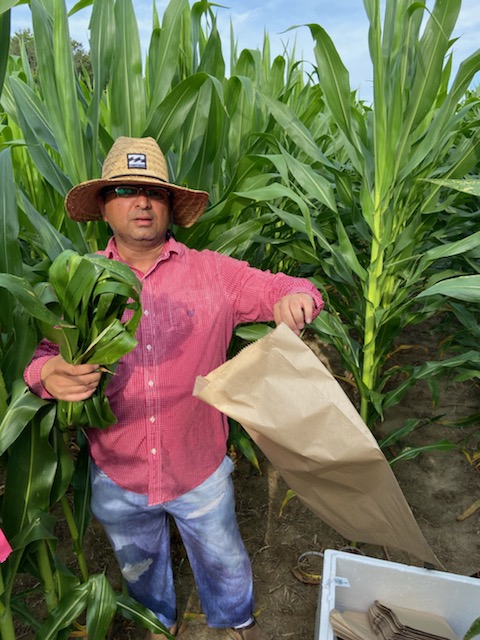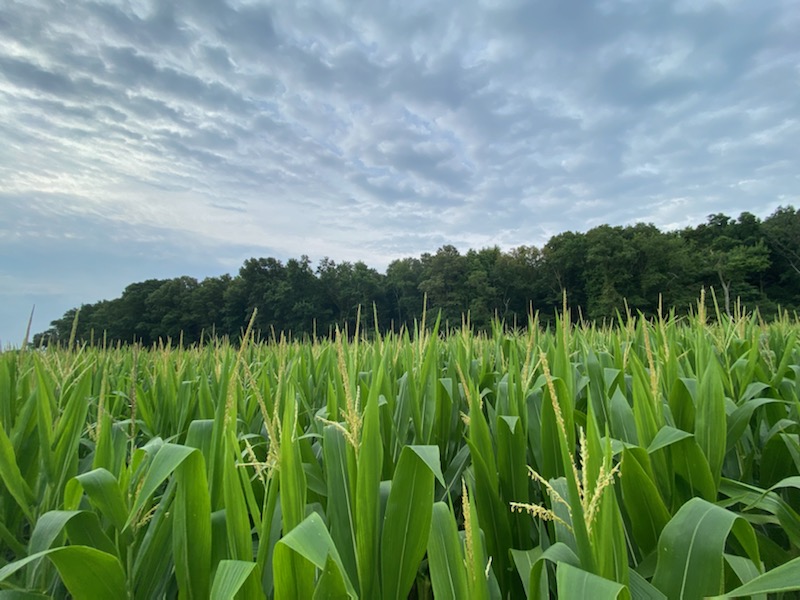
Micronutrient zinc deficiency can cause a decline in corn yield, according to UMES Associate Professor of Horticulture Naveen Kumar Dixit. Funding through the Maryland Grain Producers Utilization Board in Queenstown, Maryland will enable Dixit to continue his research on micronutrient zinc to enhance yield potential in corn.
A recent $12,500 grant award will allow Dixit to replicate and build on a field experiment during last year’s growing season.
“We are pleased to provide funding for projects that carry out our mission to increase the profitability of Maryland grain production and to improve public understanding of agriculture using checkoff funds to support promotion, education and research,” Joe Bruning, president, Maryland Grain Producers Utilization Board.
During Dixit’s field experiment, multiple doses (0, 2, 4, 6, and 8 lbs/A) of zinc were applied in the form of liquid fertilizer using a strip-till machine. Zinc was delivered 4 inches below the soil level and 2 inches below the seed level. Corn roots, Dixit said, accessed the applied zinc between fourth and sixth leaf stage when the roots reached a depth of 6 inches in the soil profile.
“Positive effects of zinc were observed on corn yield, number of grains per cob, number of grains in basal and apical region of the cob, grain yield in basal and apical region of the cob, cob length and pollen viability,” Dixit said.
The highest (168.0 bu/A) grain yield was observed in 8 lbs/A zinc application and was 16% more in comparison to controls (141.0 bu/A), Dixit said. The increase in corn yield at 8 lbs/A zinc application is attributed to a decrease in dry matter accumulation in shoot at harvest (11.8%), increase in number (basal grain: 7%, apical grain:10%) and yield of grains in basal (14.3%) and apical (18.1%) region of the cob, and increase in pollen viability (6.3%).
Based on the current price ($6.86/bu) of corn, the total economic gain per acre is $192.08, not including the cost of labor and other resources. The current price of ZnSO4 fertilizer (35.5%) is $120/50 lbs. To provide 8 lbs of zinc (100%) per acre, approximately 24 lbs of ZnSO4 fertilizer (35.5%) is required, which costs approximately $60/A. Therefore, the total economic profit ($192.08 – $60) is $132.08/A by using 8 lbs/A application of zinc.
“The corn yield (168.0 bu/A) was calculated during low rainfall conditions and could end up being more during a season with normal rainfall,” Dixit said. “However, it is evident even with drought conditions that the application of zinc enhanced the yield in treated plots in comparison to controls.”
Gail Stephens, Agricultural Communications and Media Associate, University of Maryland Eastern Shore, School of Agricultural and Natural Sciences, UMES Extension, 410-621-3850, gcstephens@umes.edu.
Photos, submitted by Dr. Naveen Kumar Dixit






